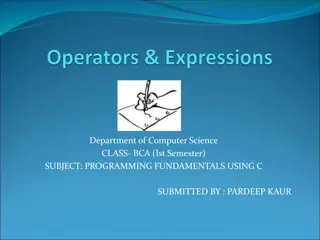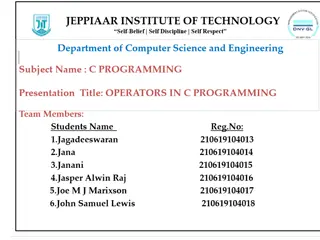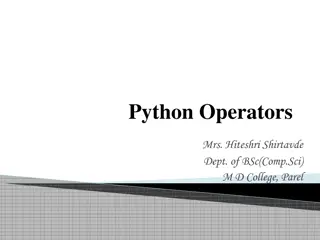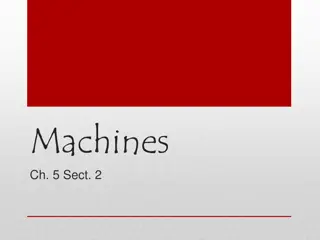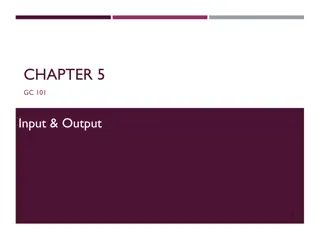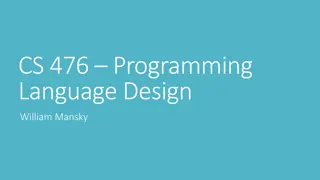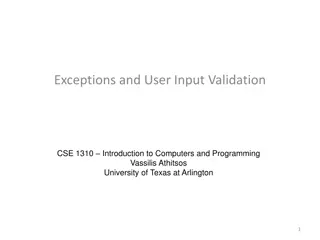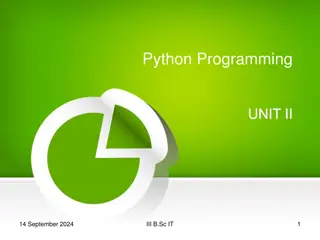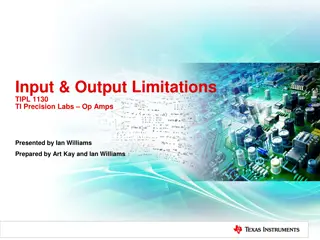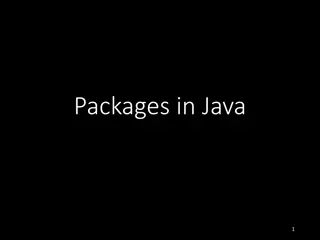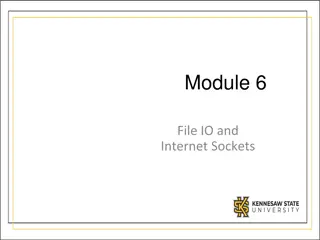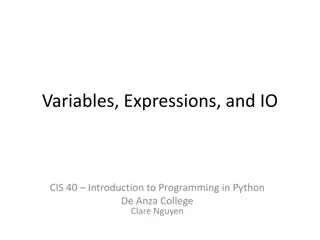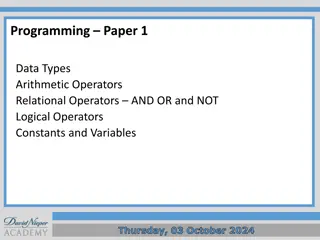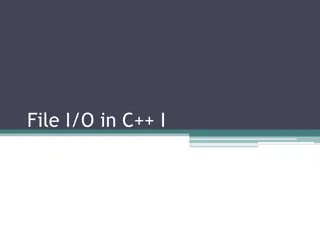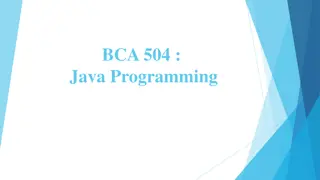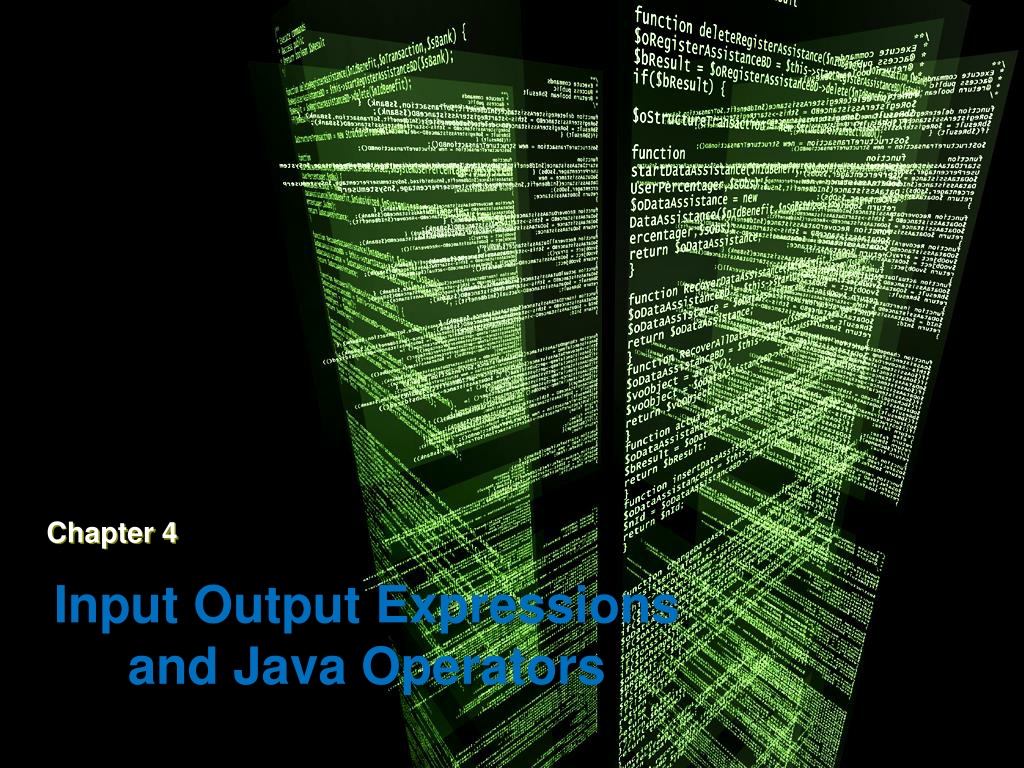
Java Input-Output, Expressions, and Operators Explained
Learn about input and output handling in Java, creating expressions, performing computations, understanding Java operators, operator precedence, and Math class methods. Explore Scanner class for input and System.out for output in Java programming.
Download Presentation

Please find below an Image/Link to download the presentation.
The content on the website is provided AS IS for your information and personal use only. It may not be sold, licensed, or shared on other websites without obtaining consent from the author. If you encounter any issues during the download, it is possible that the publisher has removed the file from their server.
You are allowed to download the files provided on this website for personal or commercial use, subject to the condition that they are used lawfully. All files are the property of their respective owners.
The content on the website is provided AS IS for your information and personal use only. It may not be sold, licensed, or shared on other websites without obtaining consent from the author.
E N D
Presentation Transcript
Chapter 4 Input Output Expressions and Java Operators
In This Chapter you will learn Use the classes intended for Input and output Create Java Expressions Performs Computations Understand the use of Java Operators. Know the rule of operator precedence Identify the different Math class methods
Input and Output Input and output, or I/O is the communication between an information processing system, such as a computer, and the outside world, possibly a human or another information processing system.
Inputs are the signals or data received by the system and outputs are the signals or data sent from it
Scanner Class A class in the java.util package. The methods of this class are used to read data from the standard input device and store data into variables.
Methods of the scanner class Method Description Example Retrieves input as a double Double x = nextDouble() objectName.nextDouble(); Retrieves input as an int int x = objectName.nextInt(); nextInt() Retrieves the next line of data String x = objectName.nextLine(); nextLine() and returns it as a String Retrieves the next complete String x = objectName.next(); next() token as a String Retrieves input as a short short x = objectName.nextShort(); nextShort() Retrieves input as a byte bytex = objectName.nextByte(); nextByte() Retrieves input as a float float x = objectName.nextFloat(); nextFloat() Retrieves input as n long longx = objectName.nextLong(); nextLong()
Printing Data with System.out Standard output is a stream designed to display text output onscreen. When you run a Java program under Windows, a special console window opens, and the standard output stream is connected to it.
The print () method Displays an output, and the insertion point stays in the current line.
The println () method moves the insertion point to the following line after the output is displayed.
The printf () method used to create an output in a specific format
Format used for the printf method Format Type of output Example Specifier Character A single character: %c A single character in a field of two (2) spaces: %c %2c Decimal integer number Floating-point number An integer A floating-point number: %f With 2 digits after the decimal point: %.2f %d %f With 2 digits after the decimal in a field of 6 spaces: %6.2f Exponential floating-point number A floating-point number in exponential format: %e %e String A string formatted to a field of 10 spaces: %10s %s With first 2 characters of the string: %.2s
Java Operators Arithmetic Operators Relational Operators(Comparison) Logical Operators Bitwise Operators Assignment Operator
Categorizing operators by the number of operands Unary operators Binary operators Ternary operators
The Math Class methods that perform a wide variety of mathematical calculations, from basic functions such as calculating an absolute value or a square root to trigonometry functions such as sin and cos (sine and cosine), to practical functions such as rounding numbers or generating random numbers.
Constants of the Math class Math Class constant Constant What it is PI Value 3.141592653589793 The constant pi ( ), the ratio of a circle s radius and diameter The base of natural logarithms 2.718281828459045 E
Category of Math class method Mathematical functions Rounding Functions
Operator Precedence Operator precedence determines the order in which expressions are evaluated. This, in some cases, can determine the overall value of the expression
Table 4.11 Operator Precedence Notes Parentheses () group expressions; dot (.) is used for access to methods Operator . [] () and variables within objects and classes; [] is used for arrays Returns true or false based on whether the object is an instanceof the ++ ! ~ instanceof named class or any of that class s super classes new (type)expression The new operator is used for creating new instances of classes; () in this case is for casting a value to another type. Multiplication, division, modulus Addition, subtraction Bitwise left and right shift Relational comparison tests Equality AND XOR OR Logical AND Logical OR Shorthand for if... then... else Various assignments * % + << >> >>> < > == != & ^ | && || ?: = += = *= = %= ^= &= |= <<= >>= >>>=
Congratulations. Well done

